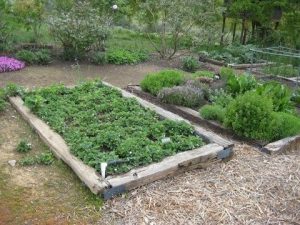The weather may be sizzling but, believe it or not, it’s time to think about your fall food garden. With escalating food prices, keeping a vegetable patch producing through the seasons is the way to go.
FIRST THINGS FIRST: Decide what and when you’re going to plant. Here in the Sonora area, we tuck cool-weather veggies into the ground around Labor Day. If you garden above 2500 ft. or so, you may need to wait until March or April. Consult http://cecentralsierra.ucanr.edu/files/149587.pdf for planting dates.
Once it’s time to plant, you can purchase many young seedlings from the garden center. But starting your own seeds is more economical, and there is a tantalizing variety from which to choose.
You’ll likely have better luck starting most garden seeds in a sunny window or perhaps in a protected area outside. Broccoli, cauliflower, and Brussels sprouts take longer to germinate and grow large enough to plant. At lower elevations, waste no time and start them now.
In warmer areas, you can grow scallions, shallots, and kale from seed in mid-August. I also plant chard, beets and radicchio at this time, and lettuce and radishes a bit later yet, particularly if the mercury is still soaring. If started inside, harden off (condition) your seedlings outside in a sheltered area for a week or so before moving them into the garden.
Wait until December through early February to plant peas directly into the ground. I get better germination if I manage to plant during a warmer spell.
WHERE TO PLANT: Edible plants are beautiful, too, so if your best sunny spot is in an ornamental bed, put them there. Pump up the soil first with an extra layer of garden gold (compost-either homemade or commercial). Repeat at least yearly. This will gradually enrich and loosen the soil, eliminating the need for fertilizer and deep or frequent digging. Your garden’s beneficial soil organisms-including bacteria, fungi, and earthworms-will thank you.
Pots come in especially handy during the cooler months since you can move them to a sheltered spot during a cold snap. Use a light, water-retentive commercial soil mix or amend native soil with plenty of compost.
I keep potted greens close to the kitchen so I can dash out and snip last minute salad makings. This works well for lettuce, arugula, radicchio, baby bok choi, chard and kale. There are seed varieties especially suited to container growing.
OTHER STRATEGIES: When harvesting lettuce and other salad greens, use the “cut and come again” technique, clipping leaves an inch or so above the soil. Weather permitting, plants may regrow for two or even three cuttings.
Overheated greens turn bitter, so-if hot weather threatens (in the 80s or above)-move pots to a cooler location or cover with shade cloth.
It’s best to avoid replanting veggies from the same family in the same spot for three years, though that requires more space than many backyard gardeners have. My philosophy: do the best you can. I keep a sketch of my garden plan for a couple of years as a reminder of where I planted in the past.
Here is a summary of vegetable families. Onion family: garlic, leeks and shallots. Cabbage family: cauliflower, broccoli, bok choi, arugula, radishes and kale. Lettuce family: radicchio. Pea family: beans. Tomato family: peppers, potatoes and eggplant. Spinach family: chard and beets. Cucumber family: melons, squash and gourds.
Prolong leftover seed life by storing in air-tight containers away from sunlight. Many will last for several years.
And be sure to grow some flowers among your veggies. A tasty garden can be beautiful too!
Vera Strader delights in fresh home-grown produce. She knows that flowers among her veggies attract bees and other beneficial insects.


